
Opossums are members of the marsupial order Didelphimorphia endemic to the Americas. The largest order of marsupials in the Western Hemisphere, it comprises 126 species in 18 genera. Opossums originated in South America and entered North America in the Great American Interchange following the connection of North and South America.

The bushy-tailed opossum is an opossum from South America. It was first described by English zoologist Oldfield Thomas in 1912. It is a medium-sized opossum characterized by a large, oval, dark ears, fawn to cinnamon coat with a buff to gray underside, grayish limbs, and a furry tail. Little is known of the behavior of the bushy-tailed opossum; less than 25 specimens are known. It appears to be arboreal (tree-living), nocturnal and solitary. The diet probably comprises insects, eggs and plant material. This opossum has been captured from heavy, humid, tropical forests; it has been reported from Bolivia, Brazil, Colombia, Ecuador and Peru. The IUCN classifies it as least concern.

The gray four-eyed opossum is an opossum species from Central and South America, ranging from southern Mexico to Peru, Bolivia and southwestern Brazil, at altitudes from sea level to 1600 m, but generally below 1,000 metres (3,300 ft). Its habitats include primary, secondary and disturbed forest. It is one of many opossum species in the order Didelphimorphia and the family Didelphidae.
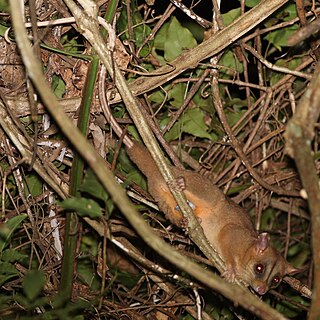
The bare-tailed woolly opossum is an opossum from South America. It was first described by Swedish zoologist Carl Linnaeus in 1758. The bare-tailed woolly opossum is characterized by a gray head, brown to gray coat, orange to gray underside and a partially naked tail. It is nocturnal and solitary; there is hardly any social interaction except between mother and juveniles and in mating pairs. The opossum constructs nests in tree cavities, and its litter size ranges from one to seven. Gestation lasts 25 days, and the juveniles exit the pouch after three months; weaning occurs a month later. The bare-tailed woolly opossum inhabits subtropical forests, rainforests, secondary forests, and plantations; its range extends from northern Venezuela to northeastern and southcentral Brazil. The IUCN classifies this opossum as least concern.

The nine species in the genus Philander, commonly known as gray and black four-eyed opossums, are members of the order Didelphimorphia. Mature females have a well-developed marsupium. The tail appears to be hairless except for the proximal 5 or 6 cm, which has a few long hairs. The tail is slightly longer than the head-and-body length, and it is black for the proximal one half to two thirds of its length. The genus is closely related to Didelphis but the species of Philander are smaller than those of Didelphis. The genus formerly included Metachirus nudicaudatus, but this species lacks a pouch and so is now considered a separate genus. The common name comes from the white spots above the eyes, which can appear from a distance to be another set of eyes.
Olrog's chaco mouse is a species of South American rodent in the family Cricetidae, endemic to Argentina. The natural habitat of the species is hot deserts. Its karyotype has 2n = 60. The species is named after Swedish-Argentine biologist Claes C. Olrog.

Olrog's gull is a species of gull found along the Atlantic coast of southern Brazil, Uruguay, and northern Argentina. It was formerly considered a subspecies of the very similar L. belcheri. It is a large gull with a black back and wings, white head and underparts, a black band in the otherwise white tail, and a yellow bill with a red and black tip. Nonbreeding adults have a blackish head and a white eye ring. The species is named after Swedish-Argentine biologist Claes C. Olrog. It has a rather restricted breeding range and is threatened by habitat loss, and the IUCN has rated it as being "near threatened".
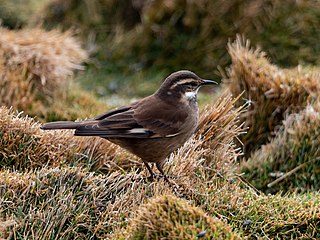
Olrog's cinclodes is a species of bird in the Furnariinae subfamily of the ovenbird family Furnariidae. It is endemic to Argentina.
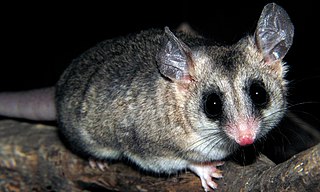
Thylamys is a genus of opossums in the family Didelphidae. The premaxillae are rounded rather than pointed. The females lack a pouch. The females' nipples are arranged in two symmetrical rows on the abdomen. All species but T. macrurus store fat in their tails., although this is not necessarily true for all species in the genus. Fossils belonging to the genus date back to the Miocene, with the oldest specimens being found in the Cerro Azul Formation of Argentina and the Honda Group of Colombia. Genetic studies indicate that the genus may have originated around 14 million years ago.

The white-bellied fat-tailed mouse opossum is a species of opossum in the family Didelphidae. It is found in Argentina, Bolivia, Chile and Peru.
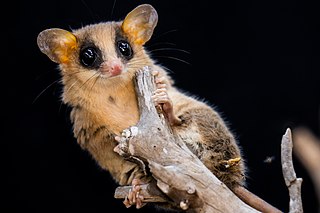
Gracilinanus is a genus of opossum in the family Didelphidae. It was separated from the genus Marmosa in 1989, and has since had the genera Cryptonanus, Chacodelphys, and Hyladelphys removed from it.

The Didelphinae are a subfamily of opossums consisting of 15 genera and 123 species. Specimens have been collected throughout the Americas, but are predominant in South and Central America.
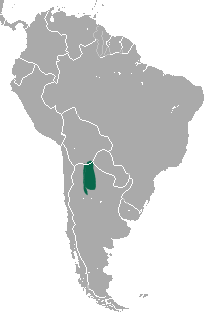
The Argentine fat-tailed mouse opossum was formerly considered a species of opossum in the family Didelphidae. It is found in the eastern foothills of the Andes in northern Argentina and southern Bolivia. Typically reach around 10-13 cm in body length, with a bushy tail adding another 12-15 cm. Its dorsal fur is gray brown to dark brown. Its ventral fur is gray-based except for the white to yellowish chest hairs. It has been distinguished from T. cinderella by its postorbital ridges. T. cinderella has well-developed postorbital ridges in both juveniles and adults that extend laterally behind the eye sockets. Only adults of T. sponsorius have fully developed postorbital ridges, and these do not extend laterally behind the eye sockets. While the American Society of Mammalogists maintains this as a distinct species, mitochondrial DNA sequence analysis does not support the population being distinct from T. cinderella.

The buff-bellied fat-tailed mouse opossum is a species of opossum in the family Didelphidae. It is found in the transitional and humid forests of northern Argentina and southern Bolivia. Its dorsal fur is cinnamon brown. Most of its ventral fur is gray-based, but its chest, throat, and the thoracic midline are not gray-based. The postorbital ridges are absent in the young and weakly developed in adults.

The deltaic four-eyed opossum or delta opossum is a species of opossum found in the Orinoco River delta region of Venezuela, South America, first described in 2006. It inhabits perennially flooded swamp forest or seasonally flooded marsh forest of the adjacent deltas of the Orinoco and nearby rivers. Its dorsal fur is gray. Its ventral fur is cream-colored, but is restricted by the hairs on the sides, which are gray at the base. Its ears are colored only along the margins. The spots above its eyes are small. The spots behind its ears are small and inconspicuous.

Mondolfi's four-eyed opossum is a South American species of opossum found in Colombia and Venezuela, first described in 2006. It inhabits foothills of the Cordillera de Mérida and those on the eastern side of the Cordillera Oriental at elevations from 50 to 800 m. Populations in the two ranges may represent distinct subspecies. It is named after the Venezuelan biologist Edgardo Mondolfi. It has short woolly fur with a pale cream-colored venter as well as large ears pigmented on only the distal half. It is considered to be a junior synonym of the common four-eyed opossum by some sources, such as the Mammal Diversity Database.
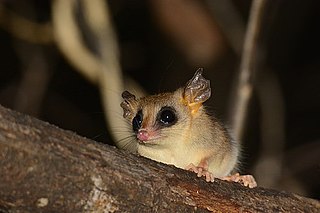
Cryptonanus is a genus of opossums from South America. It includes five species found from Bolivia to Uruguay and eastern Brazil, one of which is now extinct. Although the first species were discovered in 1931, the genus was not recognized as distinct from Gracilinanus until 2005. It includes small opossums with generally grayish, sometimes reddish, fur that are mainly distinguished from other opossums by characters of the skull.
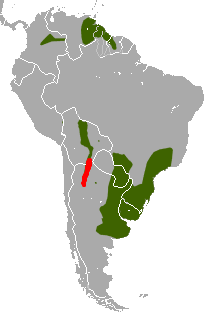
Massoia's lutrine opossum is a species of opossum native to South America.

The common four-eyed opossum is a species of opossum from South America.



















